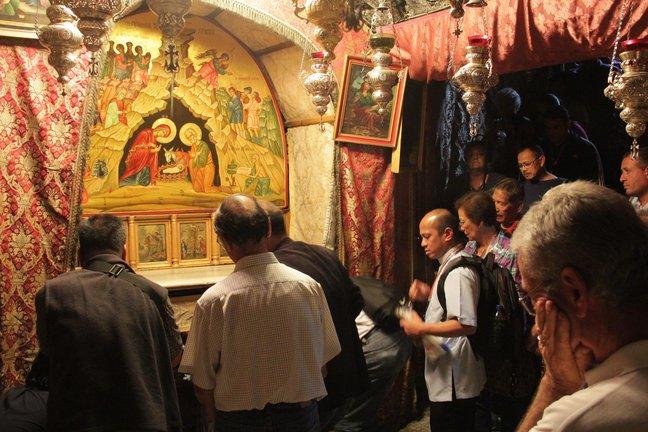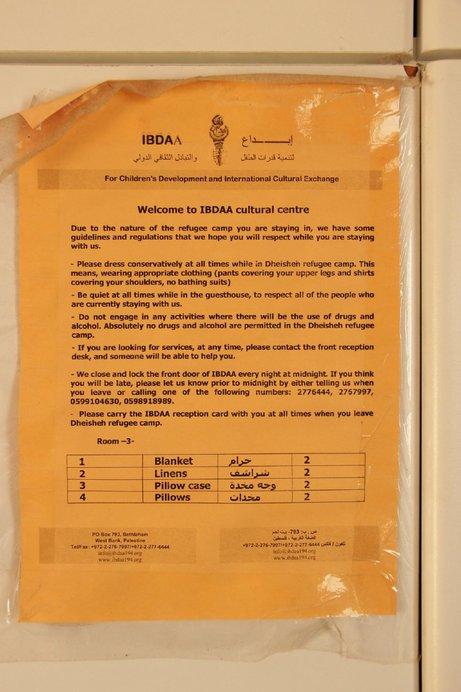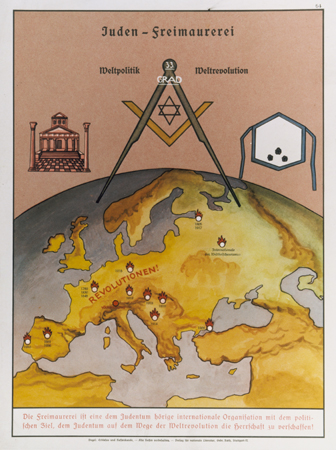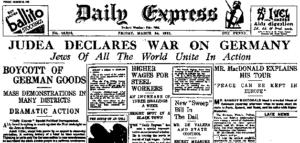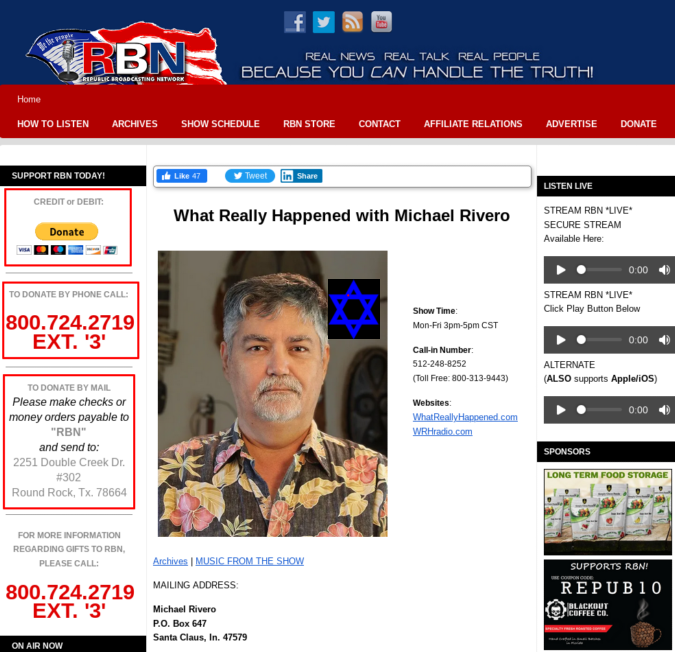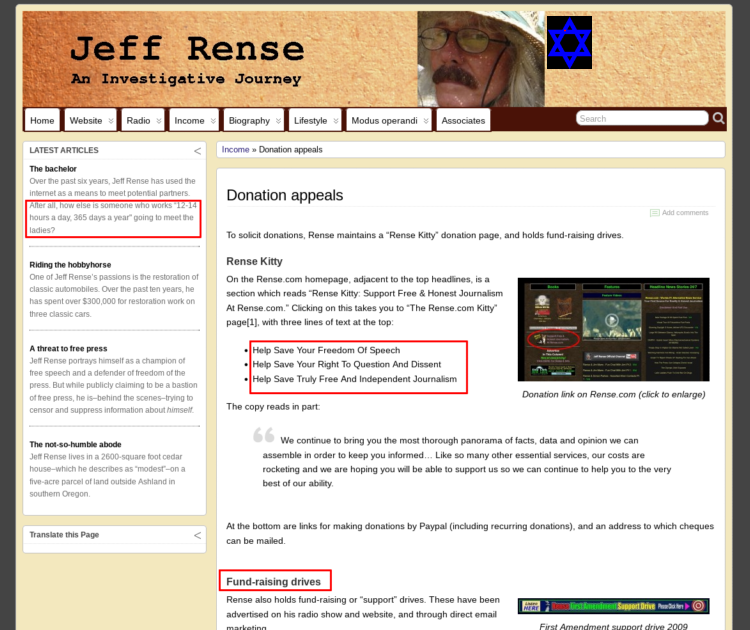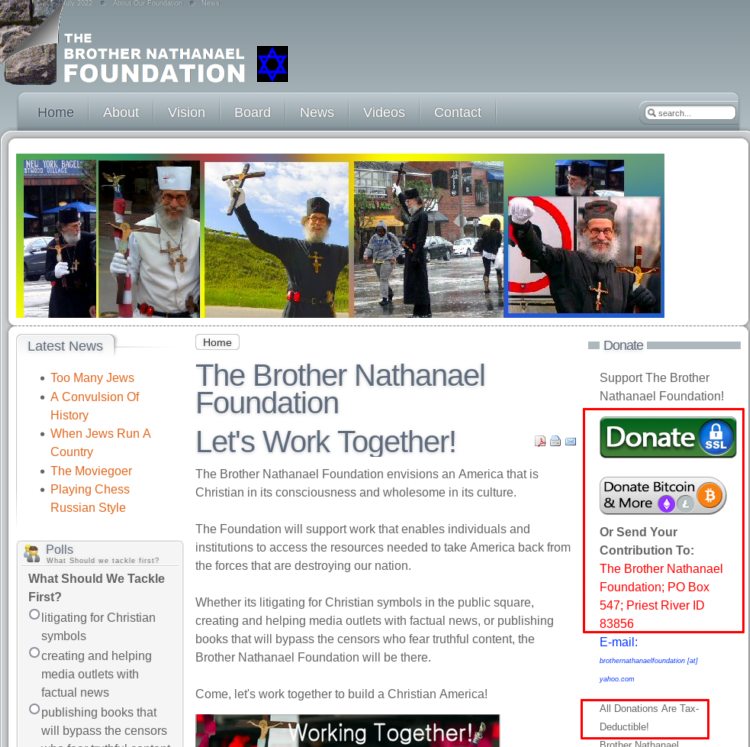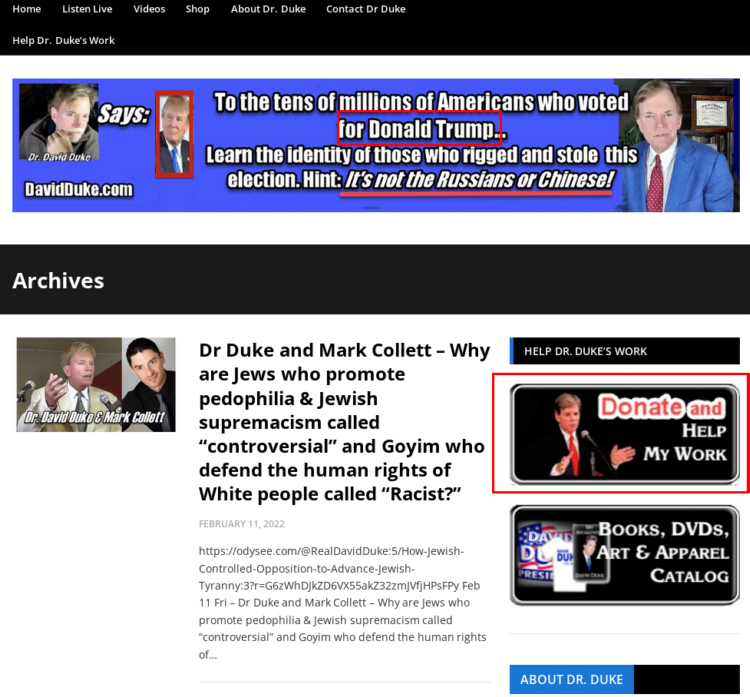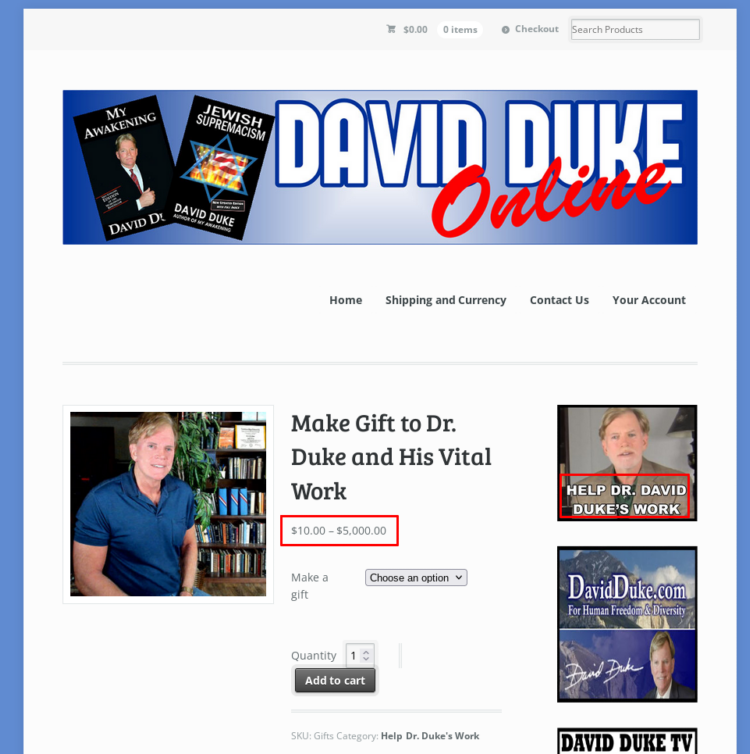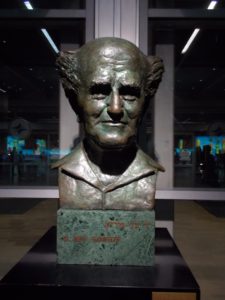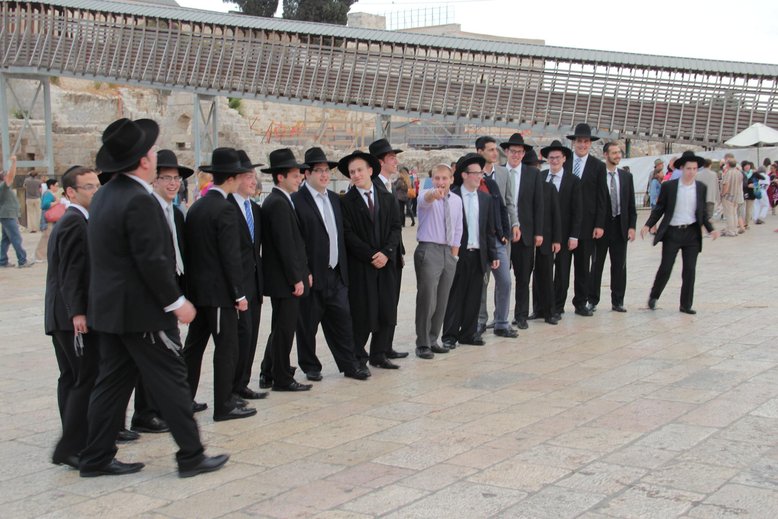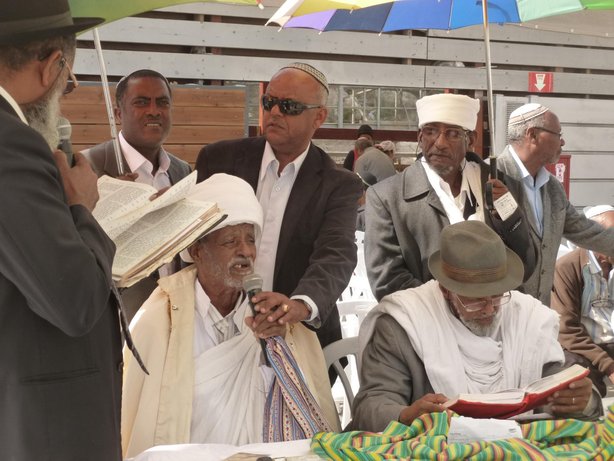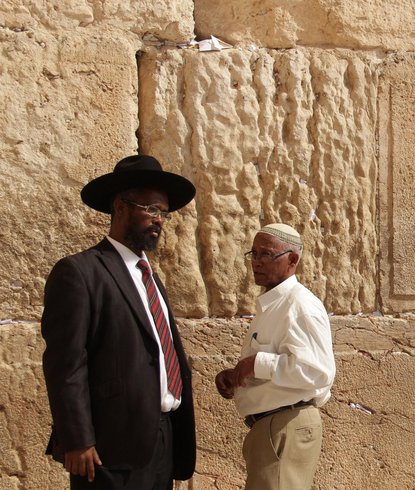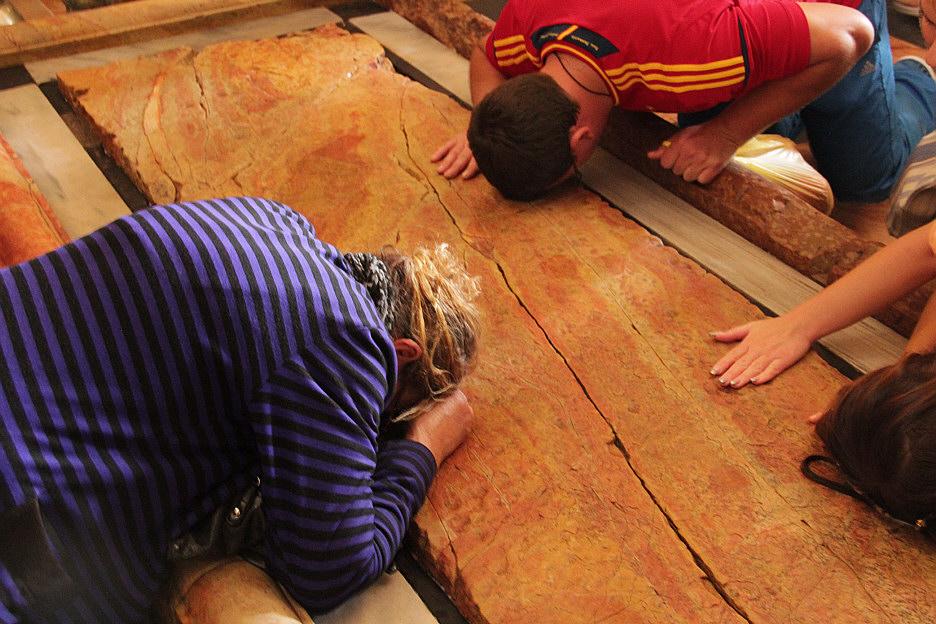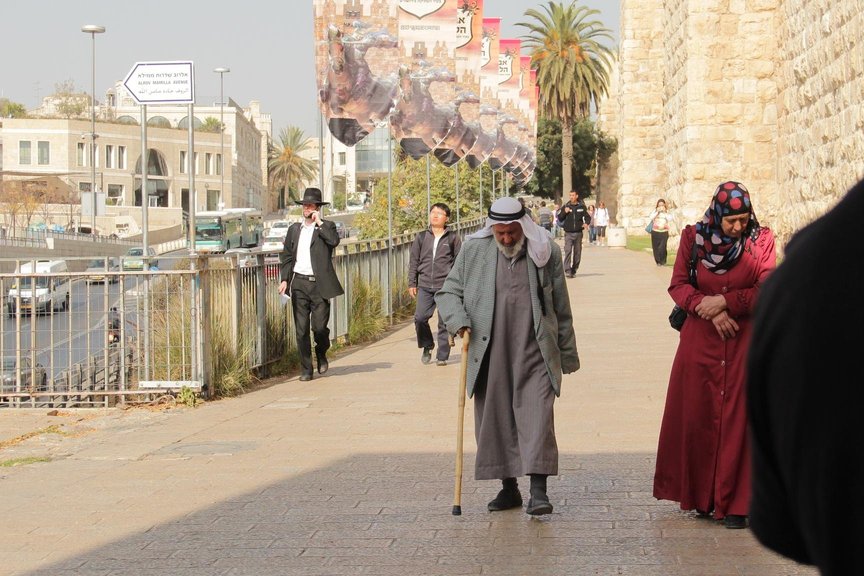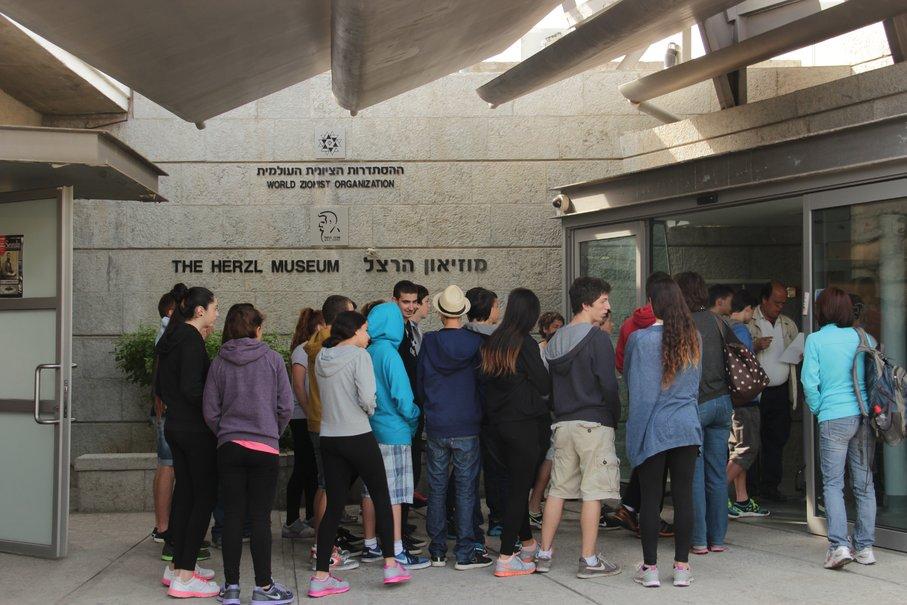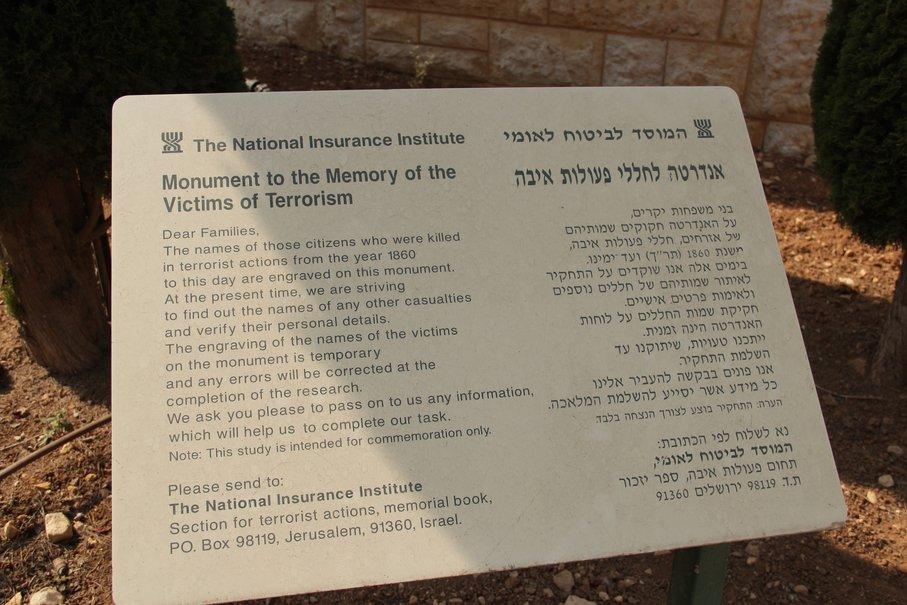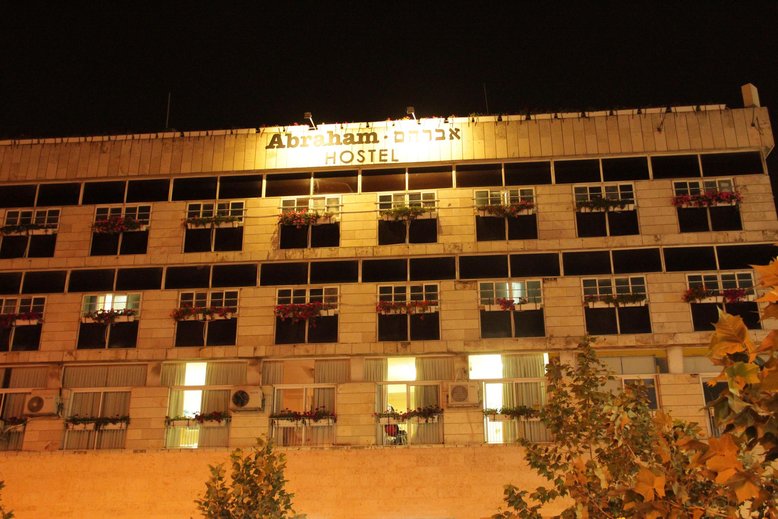Liberalism is an agenda that promotes the individual at the expense of the group. The group can be your family, community, country, race, or religion. Though organized religions such as Christianity have liberal doctrinal teachings, they have historically solidified the people and the race. Organized religion has elements of both liberalism and conservatism. Among the most important agendas of liberalism is the elimination of discrimination and prejudice. The history of liberalism goes back at least 2500 years with the creation of Buddhism. Here I focus on the modern era.
Three areas that are covered are: 1) social liberation 2) economic liberation and 3) major technological advances
Social liberation – Liberating the individual and destroying the group. Also, liberating society from the Church and all forms of authority.
Economic liberation – Deregulating businesses and facilitating capitalism. In a purely free-market system there would be no laws governing trade and commerce. In actuality, many laws and regulations exist in today’s modern day and age but not so much to protect the people but to protect big businesses. Patents are an example of laws that protect big businesses.
Technological advances– Though technology has made our lives more convenient, technological inventions such as television and the Internet have been a tremendous tool in the spread of liberalism. They have also made it easier to control and govern large groups of people.
The terms liberal, liberate, libertarian, liberalism, and liberty all share similar meanings. There is essentially no difference between those terms. We, especially Americans, have been conditioned to believe that all forms of liberty are inalienable God-given rights.
Though the title of this write-up is “The History of Liberalism: 1492 to Present”, I decided to include a few notable entries prior to this year. Also because I am from the United States, my entries are going to be mainly American and Western-biased. As a side note, a lot of my material is from Wikipedia. I use Wikipedia for convenience and the ease of finding information quickly. Yes, it has issues and IS liberally biased but nonetheless it is a useful tool.
Note: I have provided links in some of my entries. Some of the linked material has not been thoroughly reviewed. Do your own due diligence.
Pre-1492
15th to 16th Centuries – The Renaissance was a golden period where art, music, philosophy, and the sciences flourished. Some critics argue that many of the so-called discoveries in science and philosophy of this period were things that had already been discovered by the Greeks more than thousand years prior. That knowledge was destroyed during the Dark Ages and has been slowly rediscovered over time. During the Renaissance there was the move towards individualism and liberalism.
1440 – Johannes Gutenberg, born into a family of wealthy merchants and minters, is credited for starting the global printing revolution with the Gutenberg press. The Gutenberg press was a movable-type of printing press that produced large amounts of printed materials economically. Arguably this was the beginning of mass media. This was also the beginning of the ease of disseminating mass propaganda on a scale never seen before. The Gutenberg Bible was the earliest major work printed in mass. The printing press was instrumental in the spread of liberal ideas throughout both the Old and New World, especially that of Christianity and economic rationalism. The printing press enabled capitalism to thrive with the ability to print advertisements economically in media such as newspapers and journals. Marshall McLuhan in The Gutenberg Galaxy argues that technologies are not simply inventions which people employ but are the means by which people are re-invented.
1450 – “Patents were systematically granted in Venice as of 1450, where they issued a decree by which new and inventive devices had to be communicated to the Republic in order to obtain legal protection against potential infringers. The period of protection was 10 years. These were mostly in the field of glass making. As Venetians emigrated, they sought similar patent protection in their new homes. This led to the diffusion of patent systems to other countries.” – Wikipedia
1474 – World’s first statutory patent system appeared in Venice. It was the Venetian Patent Statute. Patents helped protect the profits of the glass industry in Venice. This system was said to spawn the system of modern patents. It became a lucrative part of the capitalist system. It became a way that corporations could monopolize their products and lock in profits.
Recent historical research has suggested that the Venetian Patent Statute of 1474 was inspired by laws in the Kingdom of Jerusalem that granted monopolies to developers of novel silk-making techniques. – Wikipedia
The New World
1492 – The Spanish Inquisitions. The Inquisitions were used to identify heretics among the Jewish converts (Conversos) and Muslim converts (Moriscos) to Catholicism. The Spaniards over the previous decades were becoming increasingly suspicious of the Jews and the Muslims (many of them were crypto-Jews) and saw their “conversions” as not being genuine. Jews were still seen as exploiters, especially when it came to money-lending and trade. The Spaniards wanted actions to be taken against them. The Queen made Tomas de Torquemada, a converso Jew himself, in charge of the Inquisitions. Though some Jews were killed and persecuted under Torquemada, the Inquisitions had the effect of dispersing many influential Jews to other parts of Europe, especially Amsterdam. It also had the effect of allowing many Jews to successfully hide under Christianity and become hard-to-detect crypto-Jews, many who have infiltrated the leaderships of the West, including America.
Jacob Katz in, Out of the Ghetto, describes the thoughts of 18th century German figure, Friedrich Traugott Hartmann, on reasons why Jews have been targeted for religious conversions: Hartmann, though far from being a Christian in any dogmatic or ecclesiastical sense of the word, nevertheless recommends conversion — not so much because the act of conversion was important but because of the political and social adaptations it would entail. It is not the baptism that counts but that the Jew, by saying ‘Baptize me,’ says at the same time: I obey the laws of the country, I submit myself to the institution you have created, I fulfill all the obligations laid upon me at all times.” Here, for the first time, the conversion of the Jew to Christianity is demanded not because of the alleged truth of Christianity but because political and social by-products would be gained.
1492 – Christopher Columbus. Columbus’ early life was a mystery. It was believed that he had “Italian” roots. Columbus was best known for his “discovery” of the New World. His first voyage came on the heels of the Inquisitions. Columbus was financed by Luis de Santagel, Gabriel Sanchez, and Juan Cabrero. All three were converso Jews. Rumors had it that Columbus was a converso Jew himself. The Jews have always sought territories to engage in business unhampered, without having to be under the auspices of Gentile governments and all the burdens that came along with being under their rule. Columbus paved the way for the colonization of the Americas that would become the United States and the “New World” Order.
Not jewels, but Jews, were the real financial basis of the first expedition of Columbus.
– George Cohen, The Jew in the Making of America
1517 to mid-17th century – The Protestant Reformations was in response to what many thought were abuses by the Catholic Church. The outcome of the Reformations was a split in the Church and a new branch of Christianity called Protestantism. This period was full of bloody wars and feuding that changed the power structure of Europe forever. The feud started with Martin Luther’s (rumored to be a crypto-Jew) Ninety-five Thesis, published in 1517. There had been prior attempts to break the Church, but what made this period different was the power of the printing press in the spread of information (and disinformation). Though there were many religious wars fought during the Reformations, the Thirty Year War (1618-48) may have been the bloodiest of them all. Germany lost between 30 to 40 percent of it’s population. Europe lost between 6 and 8 million of theirs. The split in the church polarized the European people and undermined the power of the Catholic Church.
The Reformations marked the beginning of the separation of church and state. John Knox founded the Presbyterian Church and John Calvin started Calvinism. Calvinists differed from other Christian sects in that they emphasized the teachings of the Old Testament (i.e. Hebrew Bible) over the New Testament. The Puritans borrowed heavily from Calvinism. It was the Puritans who built America’s early colonies. Both Knox and Calvin were crypto-Jews.
Liberalism made significant inroads. The Jews during this era began to enjoy more freedoms and rights. Doctrines and rituals of the Catholic church that insulted Jews were eliminated, especially those that emphasized their role in the death of Jesus. Anti-Catholicism, with the Pope as antichrist, replaced antisemitism. The Reformations marked the beginning of religious toleration, the beginning of widespread circulation of Zionist ideas, and the study of Hebrew and Judaism in academic circles.
16th to 18th centuries – Colonization of the Americas. With the discovery of the New World came grand plans to develop it. However there was a problem. What do you do with the indigenous peoples? The answer was easy and what worked in uprooting the Europeans would also work with the indigenous in the Caribbeans and in North and South America. With colonization came the missionaries. Though conversions of the natives were sometimes peaceful, all too often violence and destruction resulted. Ancient pagan cultures were uprooted and destroyed and entire groups of people were wiped out. The widespread Christian conversions transformed populations that were once barbaric to one that was tamed, malleable, and pacified. They became liberalized.
1520s to 1860s – The Transatlantic Slave Trade. Along with colonization of the Americas came the slave trade. The colonizers needed cheap manual labor to work the plantations and to produce income for the owners (see the Virginia Company below). The slave trade was a large scale operation that shipped sub-Saharan Africans to the Caribbeans and the Americas in exchange for goods. The Jews, being experts in maritime commerce, bankrolled this operation. Primary things produced in the Americas were sugar, tobacco, and rum., which produced immense profits. Christopher Columbus himself was a slave owner. The slave trade was crony capitalism that exploited cheap labor for profits. Things haven’t changed much since then where capitalists today exploit cheap labor from China and other developing countries.
1602 – The Dutch East India Company was founded in Amsterdam and became the world’s largest company. It was financed and directed by Jews. Jewish businessmen helped turn Amsterdam from a sleepy town into a global empire based on commerce and trade. This empire, the Dutch Empire, controlled territories in the regions of modern day South Africa, southern India, Indonesia, the central and northern coasts of South America, the west coast of Africa, and the northeast United States. It was Europe’s first empire. That same year, in 1602, the Amsterdam Stock Exchange was created. It was regarded as the world’s first modern stock exchange.
One English observer alleged in 1701 that Jews handled seventeen out of every twenty East India Company shares which changed hands in Amsterdam. The preeminence of Sephardi brokers in the exchange of stocks and shares continued over many decades and it was one of their (members), Joseph Pensó de la Vega, who composed the first ever detailed account of the workings of a stock exchange.
– Jonathan Israel, Empires and Entrepots
1606 – The Virginia Company, based in London, was established for the purpose of financing the colonization of present-day eastern America. It was a joint-stock company similar in concept to the modern stock security in which investors would buy a share of a company in the hopes of making money. This concept was used to colonize territories all over the world and it was an exclusive concept to Britain. The money that investors put up would be used to develop the colonies.
The first leader of the Virginia Company, Sir Thomas Smythe, was formerly a governor of the East India Company. The Virginia Company had two divisions that operated in North America, the London Company and the Plymouth Company. These two companies colonized the present day coast of North Carolina to Maine. Income was generated mainly by the tobacco trade. Tobacco was introduced into the Virginia colony by John Rolfe. Indentured servants, a euphemism for slave labor, were employed to farm the land and develop the colonies. Working the colonies was a dangerous venture as disease, malnutrition, and warfare with the indigenous peoples took their toll and eventually bankrupted the company in 1624. Jamestown became the first English settlement in North America. The Virginia Company instructed colonial governor Gates to forcibly Christianize the Powhatan Indians, hoping to pacify and make them members of the new colony.
1609 – Jews expelled from England. Many of them were descendants of migrants from Spain who had been kicked out in 1492.
1620 – The Pilgrims (known as Separatists at the time) sailed on the Mayflower and established the Plymouth colony in Massachusetts. The colony was named after Plymouth, Devon, where the Mayflower departed. The Pilgrims were a Puritan sect that left England to seek religious freedom and to establish a Bible-based society, especially one based on the Old Testament (Hebrew Bible). They and other newly formed Protestant groups were considered as heretics by the Church of England. The Puritans were intolerant of Catholicism and were believers in individualism and the separation of church and state.
No Christian community in history identified more with the Israelites of the Bible than did the first generations of settlers of the Massachusetts Bay Colony, who believed their own lives to be a literal reenactment of the biblical drama of the chosen people―they were the children of Israel and the ordinances of God’s Holy covenant by which they lived were His divine law. Since they viewed themselves as the persecuted victims of the sinful Christian establishment of the Old World (England), the Puritans also had a natural sympathy for the Jews of their own time. The Protestant Puritan leader Cotton Mather repeatedly referred to the Jews in his prayer for their conversion as God’s “Beloved People.” The New Israel―The influence of the Hebrew Bible marks every step of the Puritan exodus to their Zion in the wilderness of the New World. The Jewish Bible formed their minds and dominated their characters; its conceptions were their conceptions… The Puritans wholeheartedly believed that it was their special mission to establish in America a society precisely modeled on the precepts of Sacred Jewish Scriptures.
– Hugh Fogelman
1624 – The Statute of Monopolies was passed by the English Parliament. This helped modernize the patent system where only ‘novel’ inventions could be patented and only for a set number of years. The patent system was a major building block of modern capitalism and would help secure profits for big businesses.
1630s – Jews, mainly capitalists, once again start migrating back to London. They mainly come from the Netherlands, which at the time was one of the wealthiest states in the world. As a consequence, London becomes one of the world’s most important cities for trade and commerce.
1637 – Dutch Tulip Mania collapses. It was considered the first speculative financial bubble in recorded history.
1639 – Oliver Cromwell comes to prominence as a leading figure in England. He was bitterly opposed to the rule under Charles I, who was a heavy supporter of monarchy. Cromwell, through his leadership, helped consolidate England, Ireland, and Scotland into a commonwealth. Cromwell was a Christian Zionist and believed that the English were descendants of the Ten lost Tribes of Israel. He had helped readmit Jews to England. The Puritans also made major inroads under Cromwell.
1640 – Censorship of the press collapses in England. The number of items produced by the English presses increase from 900 in 1640 to 4000 by 1642. Eschatological themes become widely distributed as a consequence. Millenarian ideas, particularly pertaining to the subject on church and state, come to the forefront. Major works that came out of this included Reformers and Babylon, Puritan Millennium, Apocalyptic Tradition, A Great Expectation: Eschatological Thought in English Protestantism to 1660, and Discord in Zion: The Puritan Divines and the Puritan Revolution, 1640–60.
1641 – The Council of Twelve Men formed in New Amsterdam (present day Manhattan). It was considered the first representational form of democracy in the Dutch colony. This council formed in response to attacks by Indians on their colony and ways they could deal with the problem.
1642 to 1651 – The English Civil War (part of the Wars for the Three Kingdoms) fought for independence, religious freedom, and the abolition of the monarchy. At the time one king, Charles I, ruled over England, Scotland, and Ireland. The outcome of the war was that Charles I was defeated and England became a republic. The war didn’t seem to resolve much but it ended rule by divine right. This conflict like many conflicts in Europe were stepping stones towards modern liberal democracies.
1643 – Isaac La Peyrère publishes Du Rappel des Juifs (Return of the Jews). This work was a heavy promoter of Zionism as it discussed a Jewish return to Palestine and predicted the building of the Third Temple. In it, Jerusalem played the most powerful role in world governance, all working towards the Second Coming. La Peyrère was a converso Jew from France.
1643 – Louis XIV becomes King of France at the age of 4. His rule symbolized absolutism and he was regarded as a military dictator. He abolished the rights of the French Huguenot and destroyed the protestant church in his country. Louis IV reigned for 72 years, the longest reigning monarch of all time.
1645 – William Laud, archbishop of Canterbury under Charles I, is executed. He was a firm believer in a strong form of authoritarianism called episcopalianism, which is a hierarchical form of church governance in which power comes from the bishops. Laud was a victim of his own times as the political tide was changing. His ideas had clashed bitterly with the Puritans and with him out of the way, the Puritans became a force that would alter history for years to come.
1649 – Charles I was executed in 1649 and England becomes a republic. This era lasted until 1660, when Charles II came into power and the monarchy was restored. The Restoration rolled back much of the rights Jews enjoyed under the republic.
1654 – Sephardic Jews arrive in New Amsterdam (present day Manhattan). This marked the first organized Jewish migration to North America. They helped turn New York into the world’s financial capitol it i today.
1656 – The resettlement of the Jews in England was an informal arrangement during the Commonwealth of England in the mid-1650s, which allowed Jews to practice their faith openly. This arrangement was heavily influenced by Manasseh ben Israel, who came into England from the Netherlands to pursue his case. Johanna and Ebenezer Cartwright, two Baptists, issued the original petition to Thomas Fairfax’s Council of War in January 1649 for Jewish readmission: It read, “That this Nation of England, with the inhabitants of the Netherlands, shall be the first and the readiest to transport Israel’s sons and daughters on their ships to the land promised to their forefathers, Abraham, Isaac, and Jacob for an everlasting inheritance.”
1657 – Solomon Dormido, nephew of Menasseh Ben Israel, was admitted to the Royal Exchange as a licensed broker of the City of London, without taking the usual oath of a statement of faith in Christianity. This marked a new era of admitting Jews as brokers almost indiscriminately.
1660 – The Stuart Restoration abolished the English republic. Monarchy returns.
1688 – The Glorious Revolution ends the Restoration and rule by monarchy. James II, son of Charles I, was ousted out of power.
1689 – The English Bill of Rights was enacted by the Parliament of England. The English Bill of Rights protected the individual and enacted laws such as the right to free speech, the right to bear arms, the prohibition against undue and excessive punishment, the prohibition against excessive bail, and the free election of members to Parliament.
The events of the Enlightenment, Freemasonry, the creation of the United States, and the French Revolution are closely tied together.
17th to 18th Century – The Age of Enlightenment. The Enlightenment was a movement in Europe that brought to the forefront the ideas of liberty, individualism, equality, reason, and the separation of church and state. Some notable Enlightenment thinkers were:
Thomas Hobbes (1588-1679) – An English philosopher who was best known for the book Leviathan. Hobbes believed that a strong central authority was necessary for protection of the common people. He believed that without a strong central government, society would be engulfed in endless conflicts.
Baruch Spinoza (1632-1677) – A Sephardic Jewish philosopher from Amsterdam who was considered one of the most important classical rationalist. He may have been best known for his avocation of the separation of church and state.
John Locke (1632-1704) – An English philosopher who was considered the “father of liberalism.” He was an advocate of representative government and individual rights. His writings influenced both Voltaire and Jean-Jacques Rousseau. In A Letter Concerning Toleration, Locke concluded “neither Pagan, nor Mahometan nor Jew ought to be excluded from the civil rights of the commonwealth because of his religion.” Locke was a mason.
John Toland (1670-1722) – An “Irish” Philosopher who was an atheist and a critique of Christianity but revered the Jews and Judaism. In 1714, he wrote the paper Reasons for Naturalizing the Jews.
Toland announced his conviction that human nature was essentially the same, a basic principle of the spreading idea of rationalism — and predicted that Jews, once granted the opportunity, would take to all occupations like any other human beings. – Jacob Katz, Out of the Ghetto
Toland was a mason.
Baron de Montesquieu (1689-1755) – An 18th century philosopher and judge who was the principal source of the theory of separation of powers, which is implemented in many constitutions throughout the world. He is also known for doing more than any other author to secure the place of the word “despotism” in the political lexicon. His anonymously published The Spirit of Law (1748), which was received well in both Great Britain and the American colonies, influenced the Founding Fathers of the United States in drafting the U.S. Constitution.
Advocates of Jewish emancipation, such as Montesquieu, maintained that despite their religion, Jews should be granted civil rights. Montesquieu argued that emancipation itself would make the Jew a better person. – Maxine Schur
Montesquieu was a mason.
François-Marie Arouet (Voltaire) (1694-1778) – A mason, a French philosopher, and a prolific author who was a strong advocate of individual rights, freedom of speech, freedom of religion, and the separation of church and state. Voltaire was known for his attacks on Christianity as a whole, especially Catholicism. He written more than 2000 books and 20000 letters. Voltaire was considered anti-semitic, but nonetheless was a key figure in advancing Jewish causes.
Jean-Jacque Rousseau (1712-1778) – A Genevan philosopher and author who although was a critique of strong property rights, was a proponent of rule “by the people” and against monarchy. He was friendly towards the Jews.
(Rousseau) not only demanded equal civic rights for Jews but he also, uniquely among French writers and thinkers of the Enlightenment, expressed Zionist-like beliefs, hoping that the Jews would be restored to a country of their own … Rousseau viewed Judaism as surpassing Christianity in its emphasis on compassion and justice, in effect urging modern nations to become more Jewish. – The Jewish Press
Moses Mendelssohn (1729-1786) – A German-Jewish philosopher who believed that:
(The) combination of church and state in both Christian and Jewish history is an outrage to reason, and should be terminated as soon as possible. Mendelssohn was unconcerned as to how this final termination was to be accomplished and relied on the ultimate victory of reason to fulfill his expectations (Jacob Katz, Out of the Ghetto).
Isaac de Pinto (1717-87) – A Jewish merchant and banker who was president and one of the main investors of the Dutch East India Company. He lobbied for removal of restrictions and regulations against Jewish merchants in Holland. Isaac de Pinto asserted in his polemic against Voltaire that the common prejudice against Jews might be valid against Ashkenazim but certainly did not hold for Sephardim (Katz).
Adam Smith (1723-90) – A Scottish philosopher who was considered the founder of modern economics, published the Wealth of Nations, an early treatise on capitalism. Smith was a believer in strong property and individual rights. He was against the concept of the corporation and stock ownership however.
Adolph Freiherr Knigge (1752-96) – A German writer who supported Jewish emancipation. Knigge once remarked, that the blame for the Jews’ social and moral shortcomings must be laid, to a great extent, at the door of the Gentiles who suppressed them and gave them only limited space to live in. Knigge was a mason and a leading member of the Illuminati.
Thomas Paine (1737-1809) – An English philosopher and political theorist who migrated to America with the help of Benjamin Franklin. He was most famous for Common Sense which advocated independence from Britain and argued for an egalitarian government. This piece of writing was distributed all over the colonies. It remains the best selling title in America today.
Zalkind Hourwitz (1751-1812) – A Polish-Jew living in France during the Revolution. In the 1789 publication, Vindication of the Jews, Hourwitz demands Jews receive the full privileges of citizenship, including land ownership, occupational freedom and education. That same year Hourwitz donated a quarter of his salary towards the efforts of the French Revolution.
Hourwitz argued to Christian theologians that if they were so interested in the conversion of the Jews, it would be to their advantage to grant equality of rights as the best possible means of ensuring it. He declared his conviction that, given status and opportunity, the Jews would cease to be different as to customs, occupations, and morality.
Christian Wilhelm Dohm (1751-1820) – A German philosopher and a friend of Moses Mendelssohn.
Dohm thought that by emancipating the Jews and separating church and state, the Jews would do good on their end by moving away from their practices of being traders and bankers. There would be more avenues to employment open so Jews could choose those practices instead. He thought that Jews would give up their Jewishness and assimilate. He thought that there would be more Jewish farmers and manual laborers … (He believed) the Jews, with changing conditions, would readily give up trade as their exclusive pursuit Dohm, like John Toland, fully expected because of his belief in the oneness of all human nature (Katz).
Dohm was a mason.
Jeremy Bentham (1748-1832) – An English philosopher who advocated freedom of expression, women’s rights, gay rights, animal rights, and the separation of church and state.
1717 – The first Grand Lodge in Freemasonry was established in London and marked the modern beginnings of this organization. Freemasonry is a secret society who’s primary mission is to promote liberalism and the individual. They pursue activities that undermine authority while eradicating the “old order”, which was that of authority and traditional values. Some of the main ideas of freemasonry was the separation of church and state and the promotion of democracy, equality, and individual rights. Masonry had long been considered heretical by the Church and state. It has been responsible for secretly uprooting monarchies and royal families.
THE ROLE of Freemasonry and individual Masons prior to and through the American Revolution was that of the destruction of the traditional social and political order based on an authoritarian philosophy and characterized by inequality and privilege. Speaking generally, in the ancient regime the church and state mutually supported each other in maintaining their respective places of predominance and privilege. Liberalism and liberals, which included Freemasonry and Masons, were declared to be traitorous by the state, and heretical and atheistic by the Church.
With the victorious end of the American Revolution, Masonic philosophy had, for the first time in history, an opportunity to play a constructive role in the erection of a political and social order. The experience of Masonic organizations before the Modern Age had taught Masons that liberty for the individual has never been handed down by the government—that liberty is gained through the limitation of the powers of government, not the increase of them.
… Freemasonry became the missionary of the new order—a liberal, democratic order in which Masons sought to lead mankind through education into a more equitable and just society.
– James Davis Carter, Masonry Background, History, and Influence
Famous Freemasons in History
1723 – The Anderson Constitution. The principles guiding Masonry, namely a constitution, would eventually be the blueprint for establishing the United States of America. Though there were previous attempts in creating a constitution, masonic Grand Master George Payne drafted a constitution in 1720 that stuck. In 1723, Reverend James Anderson revised the constitution and made it into a book. It became known as the Anderson Constitution and was a work so highly acclaimed that Grand Master Benjamin Franklin, one of America’s founding fathers, reprinted the book to be used by all masons in 1734. Some of the principles of the Anderson Constitution include protecting ballots and elections from undo influence (article XXXIX), the idea of checks and balances (article XIV), majority rule and universal suffrage (section 2 of article XII), freedom of speech (article XXXVII), and a supreme court to handle arbitration and appeals (article XXVII). If all this sounds familiar, it is.
1753 – The Jewish Naturalisation Act 1753 was passed by the British Parliament but was repealed a year later due to strong opposition from the public. This Act was an act of reciprocity to the Jews, particularly from chief financier Sampson Gideon, who supported the Brits in the Jacobite Rising of 1745.
1754 – Benjamin Franklin submitted the Albany Plan, which was a plan to unite the thirteen American colonies under a federal system. This plan failed but did move the colonies towards a Constitutional Republic.
1775 – One-hundred masonic lodges were established in the American colonies. Though among the lodges there were differences in geography, dialects, ancestry, and religion they were all on equal footing in principle. The idea of equality among the lodges would serve as the blueprint for admitting states to the union on an equal basis.
1775 to 1783 – The American Revolution. The American colonies, with the help of France, defeated the Brits to gain independence and became the world’s first liberal democracy. Freemasons made up a large proportion of the supporters of the revolution against British rule. In actuality the colonists defrauded the Brits:
Viewing the Revolution with hindsight, one finds little to quarrel about with the English… Actually, the Colonies had borne no more than a third of the cost of the French and Indian Wars, and England two thirds. In 1775, the per capita tax on the British was fifty times that paid by the Americans. The Sugar and Stamp Acts imposed on the Americans were mild compared to those levied on the British. The cry “No taxation without representation” disguised the issues. The colonists were objecting to a potential tyranny rather than an actual one. They were looking for a reason to rebel, rather than being pushed into rebellion. In fact, after the war, the Americans had to tax themselves more severely than the British had.
– Max Dimont, The Jews in America
1776 – Richard Henry Lee calls for a Declaration of Independence from Britain in the Continental Congress. The Continental Congress comprised of 56 delegates, of whom 32 were confirmed masons.
1776 – The Bavarian Illuminati was founded by Adam Weisphaupt, a Jew from Germany. This organization was closely tied with freemasonry and other secret societies. The Illuminati helped undermine authority and the power of the Church.
1780s to 1840s – The Industrial Revolution marked the transition between feudalism and full-blown capitalism. It employed techniques in mass production, assembly lines, and new manufacturing techniques. The precise start and ending dates for the Industrial Revolution is widely debated.
1781 – The Order of the Asiatic Brethren was founded. The Order, comprised of both of Jews and Gentiles, had the goal of reconciling differences between the two groups. The members were primarily from the upper class of society. The organization relies heavily on symbolism borrowed from the Kabbala.
Thomas von Schonfeld, who was one of the founders of the Order — was a convert of a very special type, an adherent of the Frankist sect that was a ramification of the Sabatian movement. The members of this clandestine sect were alienated from Judaism, the more radical among them leaning toward absolute anti-nomianism and nihilism while outwardly preserving the guise of Judaism. On coming into contact with the world of Enlightenment, they defected easily from a Judaism that was already undermined in the religious double life practiced in the sects (Jacob Katz).
1783 – The Treaty of Paris was signed that ended the Revolutionary War and recognized the United States as a sovereign nation. The US would eventually become the center of world power.
1788 – The American Constitution was a document that protected the rights and freedoms of American individuals. It is the oldest codified constitution currently in force. The Constitution is considered ‘conservative’ today because it has been deeply rooted with the founding of America and has been with us for over 200 years. John Jay, Alexander Hamilton, and James Madison, all masons, published the Federalist Papers in 1788, which promoted the ratification of the Constitution.
Because the Constitution was seen as concentrating too much power in the central government, the Bill of Rights was added as amendments to the Constitution. The Bill of Rights provided protection for individuals and helped protect them from abuses of power by the state. It includes much of the principals and beliefs espoused by freemasonry – the freedom of speech, the freedom of religion, the right to a fair and speedy trial, and the prohibition of unusual and excessive punishment.
A comparison of the principles of government contained in Anderson’s Constitutions, universally adopted by Masons, with those contained in the Constitution of the United States reveals that they are essentially the same in both documents. There is conclusive evidence that the majority of the men who worked for a federal union and wrote the Constitution were Masons. Some of these Masons were the most influential leaders of the fraternity in America, fully conversant with Masonic principals of government. Freemasonry was the only institution at that time governed by a federal system. There is not a scrap of evidence left by any member of the Constitutional Convention indicating that these principals were drawn from any other source. Since the government of the United States bears such a startling similarity to the government of the Masonic fraternity, both in theory and in structure, it is difficult to ascribe the similarity to coincidence.
– James Davis Carter
The American Constitution became the model which constitutions around the world modeled. Unlike centuries past, the Constitution effectively made it impossible to kick out the subverters and infiltrators. Essentially the bad guys became protected under law.
1789 – Slave owner and Masonic Grand Master George Washington takes oath as the first president of the United States.
On April 30, 1789, Washington took the oath of office as President of the United States administered by Chancellor Robert B. Livingston, Grand Master of the grand Lodge of New York. General Jacob Morton, Worshipful Master of St. Johns lodge in New York City—the oldest lodge in the city and Grand Secretary of the Grand Lodge of New York, was marshal of the inauguration ceremonies.
Of those who accompanied Washington in the inauguration ceremony, Roger Sherman, Alexander Hamilton, Baron von Steuben, General Henry Knox, and John Adams, all except Adams were Masons. It may be added that the Governors of the thirteen states at the time of Washington’s inauguration were Masons.
Washington chose four Masons for his first Cabinet as follows: Secretary of State, Thomas Jefferson (disputed); Secretary of Treasury, Alexander Hamilton; Secretary of War, General Henry Knox; and Attorney General, Edmund Randolph, Grand Master of the Grand Lodge of Virginia in 1788.
One of Washington’s first duties was to appoint the first Chief Justice and four Associate Justices of the Supreme Court. Four of the five were Masons as follows: John Jay, Chief Justice, and Associate Justices William Cushing, Robert H. Harrison, and John Blair.
– James Davis Carter
George Washington in correspondence to the Hebrew Congregation of Savannah in 1790:
May the same wonder-working Deity, who long since delivered the Hebrews from their Egyptian oppressors, planted them in a promised land, whose providential agency has lately been conspicuous in establishing these United States as an independent nation, still continue to water them with the dews of heaven and make the inhabitants of every denomination participate in the temporal and spiritual blessings of that people whose God is Jehovah.
1789 to 1799 – The French Revolution begun with the storming of the Bastille in Paris. Like the American Revolution, the French Revolution signified a change in the order and transformed France from a monarchy to a liberal democracy. Like the American Revolution, freemasonry was the driver behind it.
During this time, Lafayette (Gilbert du Motier, Marquis de Lafayette), a French aristocrat, was drafting the Déclaration des droits de l’homme et du citoyen de 1789 (Declaration of the Rights of Man and of the Citizen) with the assistance of Thomas Jefferson. This document was the French equivalent of America’s Declaration of Independence. Lafayette previously fought in the American Revolutionary War, alongside with George Washington. Lafayette so highly revered him that he named his son Georges Washington. Lafayette was a mason.
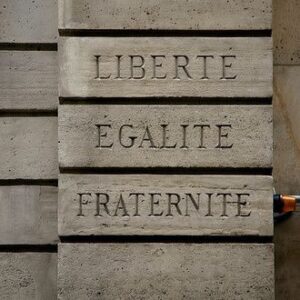
1790 – The Patent Act of 1790 led to the creation of the United States Patent System.
1790 – Judith Murray, an early feminist, publishes On the Equality of the Sexes.
1790 – France became the first country in the history of Europe to emancipate the Jews and grant them full citizenship (Sephardi in 1790 and the Ashkenazi in 1791). Jews shortly became emancipated throughout Western Europe. According to German historian Heinrich Schnee, the “emancipation of the Jews was the work of the Hoffactoren (court Jew*).” Court Jews were Jews who loaned money to the nobility and were predecessors to the modern Jewish banker. At this point the court Jew started to have tremendous influence. They operated mainly in Germany. While European leaders were promoting the ideals of Jewish liberation, especially that of benefiting the economy, the people were highly skeptical. Though Jews were ‘emancipated’ it took many years for them to be fully accepted into society, similar to the situations that blacks in the US faced immediately after slavery ended.
The first laws to emancipate Jews in France were enacted during the French Revolution, establishing them as citizens equal to other Frenchmen. In countries that Napoleon Bonaparte’s ensuing Consulate and French Empire conquered during the Napoleonic Wars, he emancipated the Jews and introduced ideas of freedom from the French Revolution.
* The biggest difference between the court Jews and the modern banker is that the modern banker is a citizen and cannot easily have his wealth taken or be kicked out.
1791 – The First Bank of the United States was chartered after a bitter debate in Congress over it’s constitutionality. George Washington signed the bank bill into law. The First Bank served as the nation’s bank and loaned money for both public and private interests but it did not have the power of a modern central bank. Like the modern Federal Reserve System, the First Bank was owned by private shareholders and was not a government agency.
1792 – The Buttonwood Agreement organized stock security trading in New York City. The agreement was signed by 24 brokers.
1793 – The Reign of Terror in France was designed to destroy the opposition of the Revolution. The exact beginning of the Reign of Terror is disputed. During the Reign, at least 300,000 suspects were arrested; 17,000 were officially executed, and perhaps 10,000 died in prison. The Reign unleashed massive violence against the Church:
The Reign of Terror was characterized by a dramatic rejection of long-held religious authority, its hierarchical structure, and the corrupt and intolerant influence of the aristocracy and clergy. Religious elements that long stood as symbols of stability for the French people, were replaced by views on reason and scientific thought. The radical revolutionaries and their supporters desired a cultural revolution that would rid the French state of all Christian influence. This process began with the fall of the monarchy, an event that effectively defrocked the State of its sanctification by the clergy via the doctrine of Divine Right and ushered in an era of reason.
Many long-held rights and powers were stripped from the church and given to the state. In 1789, church lands were expropriated and priests killed or forced to leave France. Later in 1792, “refractory priests” were targeted and replaced with their secular counterpart from the Jacobin club. Not all religious sects experienced equal aggression, such as the Jewish community, who received admittance into French citizenship in 1791. – Wikipedia
1793 – The French Constitution of 1793 (Constitution of the Year I) was ratified during the Reign of Terror. This document guaranteed the right to equality, liberty, security, property, the public debt, free exercise of religion, the absolute liberty of the press, the right of petition, the right to hold popular assemblies, and the “enjoyment of all the rights of man”. Illegitimate children were recognized under law.
1793 – Louis XVI, the last king of France, was executed in 1793. This marked the fall of the French monarchy.
1794 – Maximilien Robespierre was one of the key figures of the French Revolution. He campaigned for universal manhood suffrage, equality under law, the right to vote for people of color, and the abolition of the clerical celibacy. Robespierre was known as fiercely radical, even among his allies, and was the one responsible for instigating the Reign of Terror. In 1794, the Reign ended when Robespierre was arrested for his revolutionary activities. He was later executed.
1795 – Constitution of the Year III – When the Reign of Terror was over and the instigators arrested and punished, the French Constitution of 1793 became invalid. A more conservative constitution took it’s place.
1796 – John Adams of the Federalist Party defeats Thomas Jefferson of the Democratic-Republican Party in the first elections that took place in the US that featured the battle of the political parties. This was the beginning of the two-party system in America and the politics of conquer and divide. Jews unanimously supported the Democratic-Republicans because they thought that party better upheld the principles of liberalism and equality (i.e. Jewish ideals) than the Federalists. The Federalists still clung to the old European ideas of aristocracy and were more reluctant to abide by the Constitution.
1797 – Fall of the Venetian Republic (founded in 697). Napoleon decreed the end of Jewish segregation and the equalization of the Jews to other citizens. This provision became definitive when Venice was annexed to the Italian Kingdom.
1798 – Alien and Sedition Act was passed to prevent the French and Irish immigrants, who were suspected of radicalism, from becoming citizens.
1799 – France became the first country on earth to institute the metric system. This system eventually spread to all regions on earth, except the United States. The metric system helped to facilitate global trade.
1800 – Thomas Jefferson, who was a descendant of marrano Jews, defeats John Adams. Jefferson was a staunch believer of the separation of church and state, individualism, and the separation of powers. He also repealed the Alien and Sedition Act. When Jefferson died in 1827, Uriah Levy, a Jewish naval officer, purchased the Monticello (Jefferson’s estate) and restored it. Uriah’s nephew, Jefferson Monroe Levy, inherited the estate and sold it to the Thomas Jefferson Foundation in 1923. Uriah Levy on Jefferson:
I consider Thomas Jefferson to be one of the greatest men in history, the author of the Declaration of Independence and an absolute democrat. He serves as an inspiration to millions of Americans. He did much to mould our Republic in a form in which a man’s religion does not make him ineligible for political or governmental life.
Thomas Jefferson in response:
[I have] ever felt regret at seeing a sect, the parent and bases of all those of Christendom, singled out by all of them for persecution and oppression which proved they have profited nothing from the benevolent doctrines of Him whom they profess to make the model of their principle and practice.
1803 – Jean-Baptiste Say, a French economist, publishes Traité d’économie politique ou simple exposition de la manière dont se forment, se distribuent et se composent les richesses (A Treatise on Political Economy; or The Production, Distribution, and Consumption of Wealth). Say argued for free trade, deregulation, and a laissez-faire economy. He helped create the French Liberal School of free economic thought which was a forerunner to the Austrian School of economics.
1804 – Napoleon becomes emperor of France. The Napoleonic Code was instituted by the French Consulate to abolish feudalism and the monarchy. Historian Andrew Roberts on Napoleon: “The ideas that underpin our modern world—meritocracy, equality before the law, property rights, religious toleration, modern secular education, sound finances, and so on—were championed, consolidated, codified and geographically extended by Napoleon.” Napoleon closed the Jewish ghettos during his reign and made Jews equal to everyone else. Napoleon on the Jews:
I will never accept any proposals that will obligate the Jewish people to leave France, because to me the Jews are the same as any other citizen in our country. It takes weakness to chase them out of the country, but it takes strength to assimilate them.
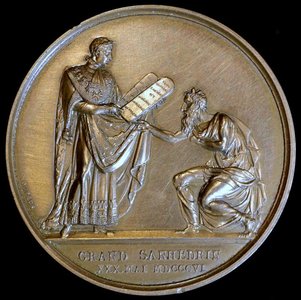
Napoleon before the Sanhedrin.
1806 – Europe’s biggest monarchy fell when the Holy Roman Empire abdicated into the hands of Napoleon. This empire turned 1000 years old in 1800.
1812 – The War of 1812 was fought between the Brits and the US over issues related to trade and American territorial expansion. The US felt that the Brits didn’t totally make good on their end in the aftermath of the Revolutionary War.
1812 – Mayer Amschel Rothschild passes away in his hometown of Frankfurt. He was the founder of the Rothschild banking empire. This family was the wealthiest and most powerful in the world during the 19th century. Mayer was under the apprenticeship of Jacob Wolf Oppenheimer, a German-Jew who taught him foreign trade and currency exchange at the age of 13. He became a court Jew by the age of 25. The Rothschilds family intermarried extensively with the European nobility and royal families.
1814 – The Charter of 1814 was granted by King Louis XVIII of France. This was a constitution-like text that served as a compromise between the conservative ideas of the Bourbons and the liberal ideas that came out of the French Revolution.
1816 – The Second Bank of the United States was founded. Though President James Madison vehemently argued that the First Bank was unconstitutional, he charted the second one into law. Thia bank was more powerful than the First Bank and increased the power of the federal government at the expense of the states. One of the purposes of the bank was to stabilize the economy and to facilitate global trade.
1817 – David Ricardo, a Sephardic Jew, was a classical economist who published On the Principles of Political Economy and Taxation. The book argued for international free trade (i.e. globalism) and was against protectionism. Unlike Adam Smith, Ricardo supported the idea of a central bank.
1824 – Lewis Gompertz, born into a family of wealthy Jewish diamond merchants in London, was an early proponent of veganism. He was one of the founding members of RSPCA, the largest animal welfare organization in the world.
1826 – The Jew Bill was passed by the Maryland General Assembly and allowed Jews to hold public office. They were the last state in the Union to remove the prohibition against the Jews.
1828 – England removes quotas on Jews who could register to become stockbrokers.
1830 – Indian Removal Act passed, forcibly relocating the indigenous people to west of the Mississippi River. This relocation was known as The Trail of Tears.
1830 – The July Monarchy was a liberal constitutional monarchy in France under Louis Phillipe I. His reign was marked by the rise of powerful bankers and businessmen.
1832 – The Hambach Festival was a democratic national event that took place in Germany in support of liberal ideas. The current German flag (1949 to present) with it’s black, red, and gold colors originated from this event. The flag was also used from 1919 to 1933 when Germany was a republic.
1848 – Revolutions of 1848. Democratic revolutions swept throughout France, Germany, Austria, Poland, and other European countries to overthrow their monarchies. Liberals demanded freedom of speech, freedom of the press, a parliament, and a written constitution. The German monarchs reluctantly accepted some of the demands. However, German liberals, including many German-Jews were disappointed that the revolution did not achieve what they had wanted and emigrated to the United States in large numbers. They became known as the Forty-Eighters. Many of these people became powerful and influential forces in American banking and business, such as the Goldmans, the Sachs, the Lehmans, the Seligmans, the Loebs, and the Guggenheims.
1848 – The Jew Karl Marx (along with Friedrich Engels) published the Communist Manifesto. Marx was supportive of the Revolutions of 1848 and had helped arm Belgian workers to overthrow the government.
1848 – Paul Julius Reuter (Israel Beer Josaphat), through his publishing company, distributed radical pamplets attempting to overthrow the German monarchy. Reuter was founder of the Reuters news agency three years later. Reuter revolutionized journalism through the use of telegraphy.
1857 – Dred Scott vs Sandford – The Supreme Court ruled that people of African descent were not considered citizens and would not have Constitutional protection under the law.
1861 to 1865 – The American Civil War was fought over the issue of Southern sovereignty. In the years leading up to the Civil War, the South saw the Union as increasingly hostile to it’s interest and began to succeed. The North, who’s economy was based on powerful business interests and banking, wanted to preserve the Union and saw succession as a threat to it’s stability. They saw Southerners as violators of the Constitution and the principles of liberalism, especially on issues of equality. The war was led by Abraham Lincoln, rumored to have been a crypto-Jew. The aftermath of the Civil War was that slavery ended in the South, blacks were emancipated, and the South began it’s long and slow path to equality.
1863 – Emancipation Proclamation was issued by Abraham Lincoln that liberated the slaves, both blacks and whites (indentured servants).
1863 – The National Bank Act of 1863 and 1864 was the first attempt to set up a central bank. It was passed to help finance the Civil War (and future wars as well). This act spurred the growth of the national banks, which rose from 66 to 7473 by 1913 and allowed for the establishment of a national currency. This act eventually led to the Federal Reserve banking system in 1913.
1865 – 13th Amendment to the Constitution was passed outlawing slavery.
1866 – Civil Rights Act was passed that declared that all American citizens, regardless of descent, were protected by the Constitution.
1868 – 14th Amendment to the Constitution was passed granting citizenship and equal protection for all. The first section to the amendment was the Equal Protection Clause. The Supreme Court stated specifically that the Equal Protection Clause was ‘designed to assure to the colored race the enjoyment of all the civil rights that under the law are enjoyed by white persons, and to give to that race the protection of the general government, in that enjoyment, whenever it should be denied by the States’.
1869 – The first college football game was played when Rutgers faced Princeton. College sports since then has turned into a highly commercialized affair involving billions of dollars in television deals and naming rights. The US is the only country in the world where college sports are commercialized.
1870 – The 15th Amendment to the Constitution was passed ensuring slaves the right to vote. Amendments 13 to 15 reversed the 1857 Dred Scott ruling.
1871 – The Austrian School, a liberal economic think-tank, originates in Vienna. Carl Menger publishes Principles of Economics which is thought to be the forerunner to the school. The “Austrian” School attracted many Jews such as Ludwig von Mises, Abraham Wald, Eugen Bohm von Bawerk, Israel Kirzner, Murray Rothbard, George Reisman, and Walter Block. The Austrians were heavy promoters of individualism and believed that history and social phenomena are shaped from the action of individuals rather than by groups.
1871 – The Second Reich. Under this monarchy, the German states united. Jews were legally emancipated in Germany.
1873 – Comstock Laws were passed to criminalize the transmittal of obscene material and birth control material through postal mail.
1875 – The Civil Rights Act of 1875 was passed in response to repeated civil rights violations committed against blacks in the South. The Act of 1875 was designed to “protect all citizens in their civil and legal rights” and to provide for equal treatment in public accommodations and public transportation and prohibiting exclusion from jury service. The act was difficult to enforce and facilities and businesses remained segregated in the South.
1880 – Strauder vs West Virginia. This Supreme Court decision ruled that exclusion of individuals from juries because of race was unconstitutional.
1895 – Pollock v. Farmers’ Loan & Trust Company. This Supreme Court decision struck down the income tax. This was reversed with the 16th Amendment in 1913.
1896 – Jim Crow laws were upheld in the Supreme Court ruling Plessy vs Ferguson. Jim Crow laws had been enacted throughout the South to combat racial equality. The Plessy vs Ferguson decision stated that segregation laws did not violate the 14th Amendment to the Constitution, as long as “separate but equal” was being practiced.
1897 – A radical Jewish socialist movement called Bundism was founded. The Bund was an organization of the Jewish Workers’ Union in Lithuania, Poland, and Russia. It was a rivalry to the Jewish Zionist movement. The Bund was a heavy promoter of Marxism and saw communism as the answer to the ills of the Jewish proletariat in the emerging capitalist economies of Eastern Europe.
1897 – The Wissenschaftlich-humanitäres Komitee (Scientific-Humanitarian Committee) was founded by Magnus Hirschfeld, a gay German-Jew, in Berlin. It was the world’s first LGBT organization. This institute was closed by the Nazis in 1933 and it’s books burned.









